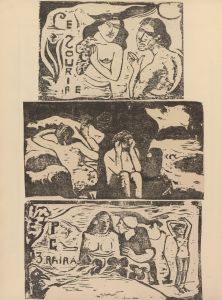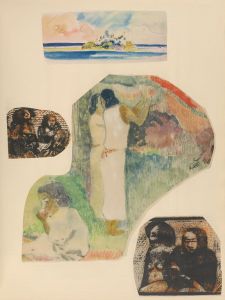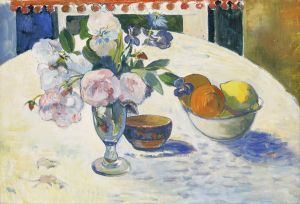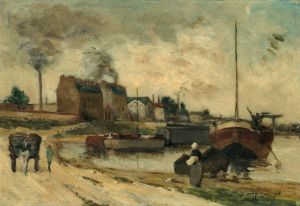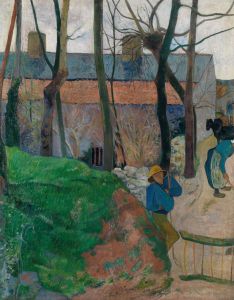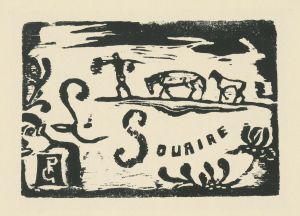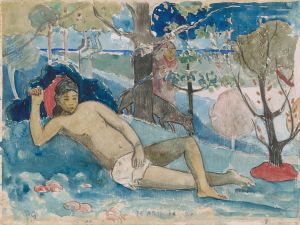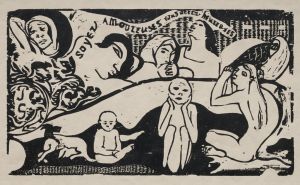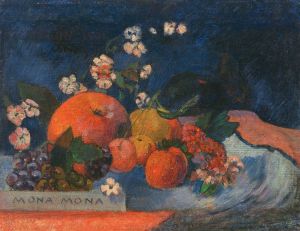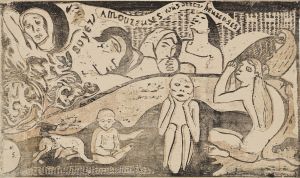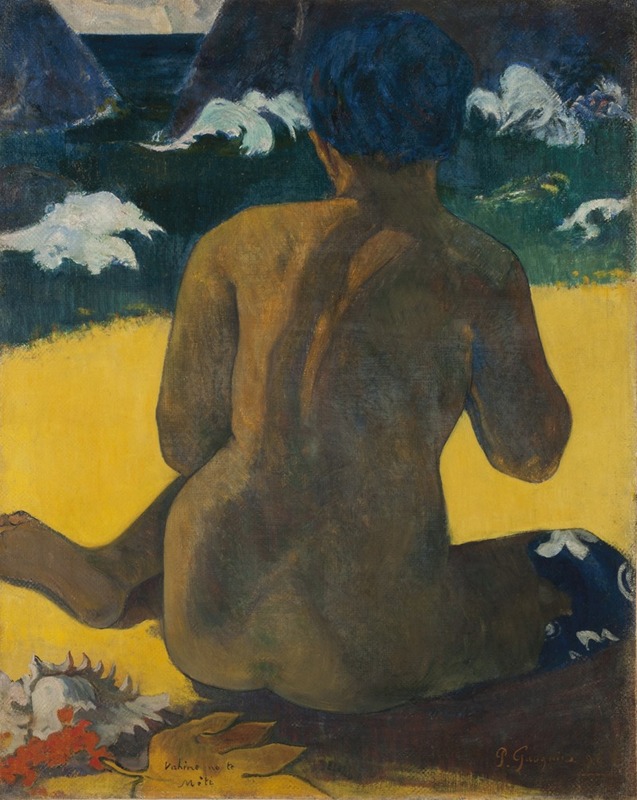
Vahine no te miti
A hand-painted replica of Paul Gauguin’s masterpiece Vahine no te miti, meticulously crafted by professional artists to capture the true essence of the original. Each piece is created with museum-quality canvas and rare mineral pigments, carefully painted by experienced artists with delicate brushstrokes and rich, layered colors to perfectly recreate the texture of the original artwork. Unlike machine-printed reproductions, this hand-painted version brings the painting to life, infused with the artist’s emotions and skill in every stroke. Whether for personal collection or home decoration, it instantly elevates the artistic atmosphere of any space.
Vahine no te miti (Woman of the Sea) is an oil painting created by the French Post-Impressionist artist Paul Gauguin in 1892. The artwork was painted during Gauguin's first extended stay in Tahiti, a period that significantly influenced his artistic style and subject matter. This painting is one of many works in which Gauguin sought to capture the essence of Tahitian culture and the natural beauty of the islands.
The painting depicts a Tahitian woman standing against a backdrop of the sea, with lush tropical vegetation framing the scene. The figure is dressed in a traditional pareo, a type of wraparound garment, and her serene expression and posture convey a sense of calm and introspection. Gauguin's use of bold, flat colors and simplified forms reflects his departure from European artistic conventions and his embrace of a more symbolic and expressive style.
Gauguin's time in Tahiti was marked by his fascination with what he perceived as the unspoiled and exotic nature of the island and its people. However, his portrayal of Tahitian life and culture has been criticized for its idealized and romanticized perspective, which often ignored the realities of colonialism and the impact of European influence on the region. Despite these criticisms, Gauguin's Tahitian works, including Vahine no te miti, are considered significant contributions to the Post-Impressionist movement and have had a lasting impact on modern art.
The painting is currently housed in the Musée d'Orsay in Paris, France, where it is part of the museum's extensive collection of 19th-century art. Vahine no te miti is often studied as an example of Gauguin's innovative use of color and form, as well as his complex relationship with the cultures he sought to depict in his art.







